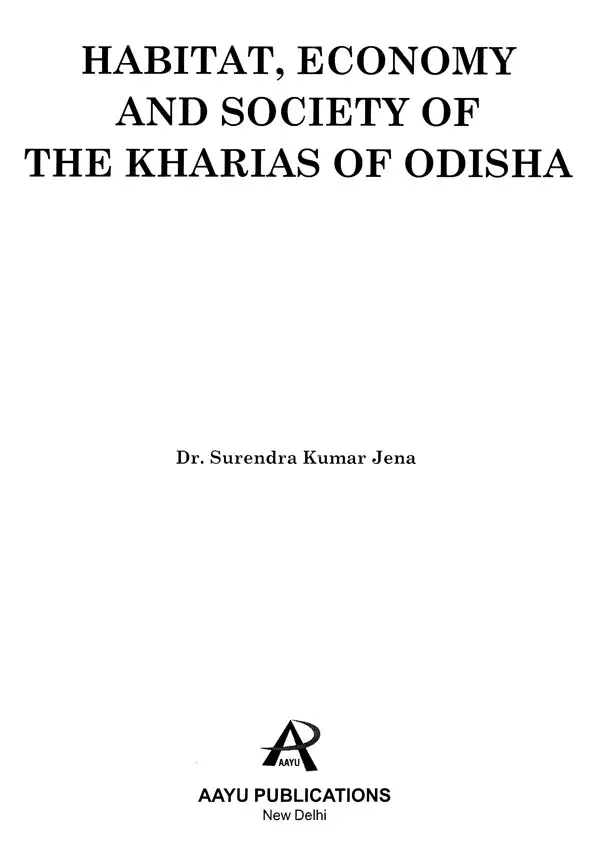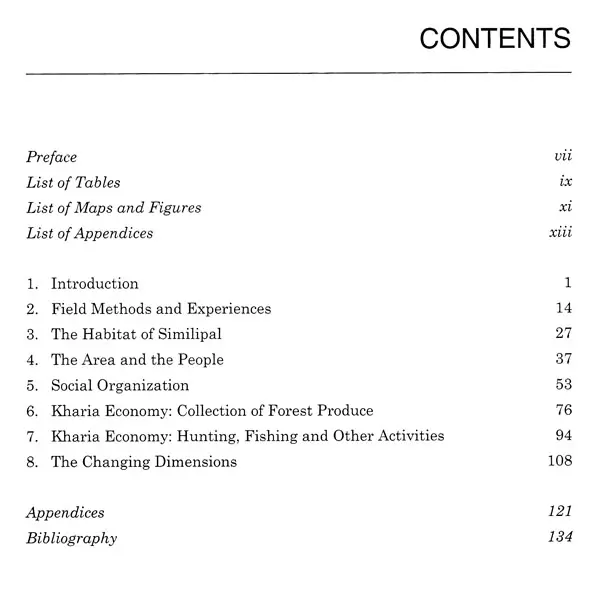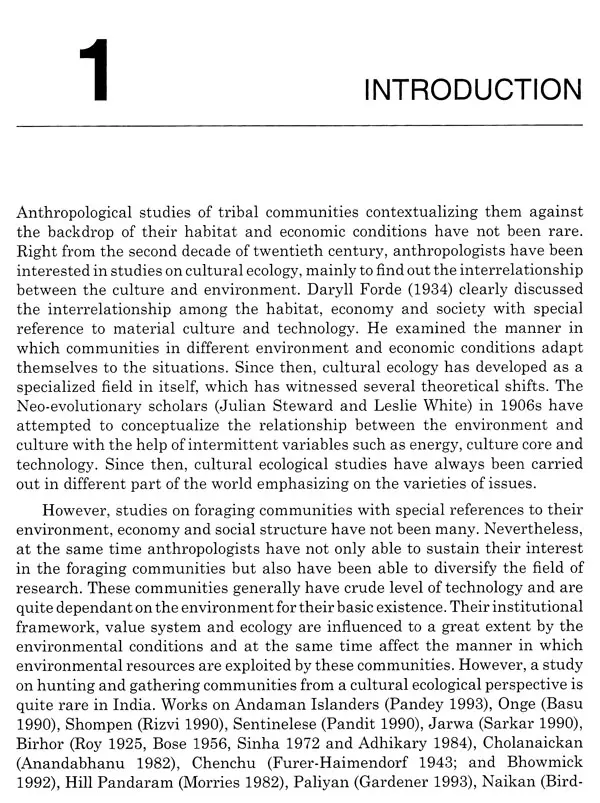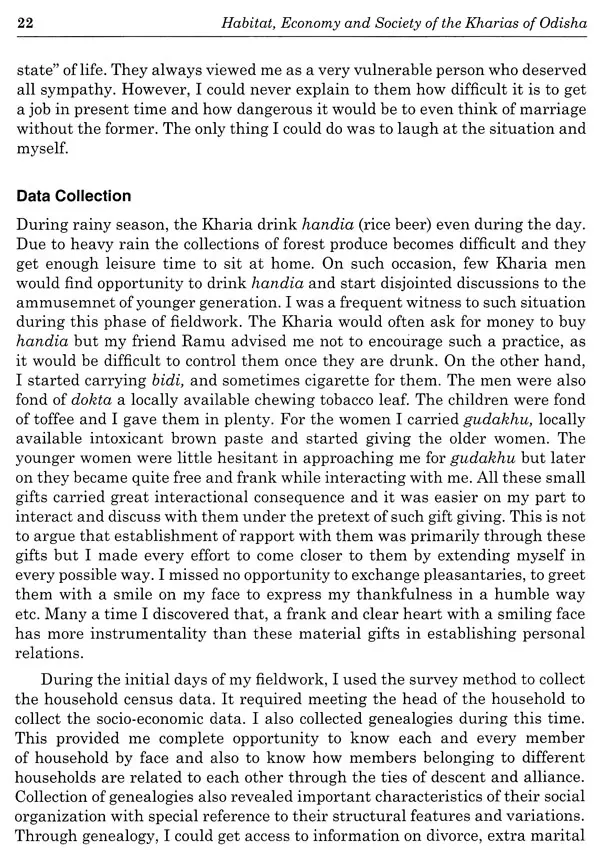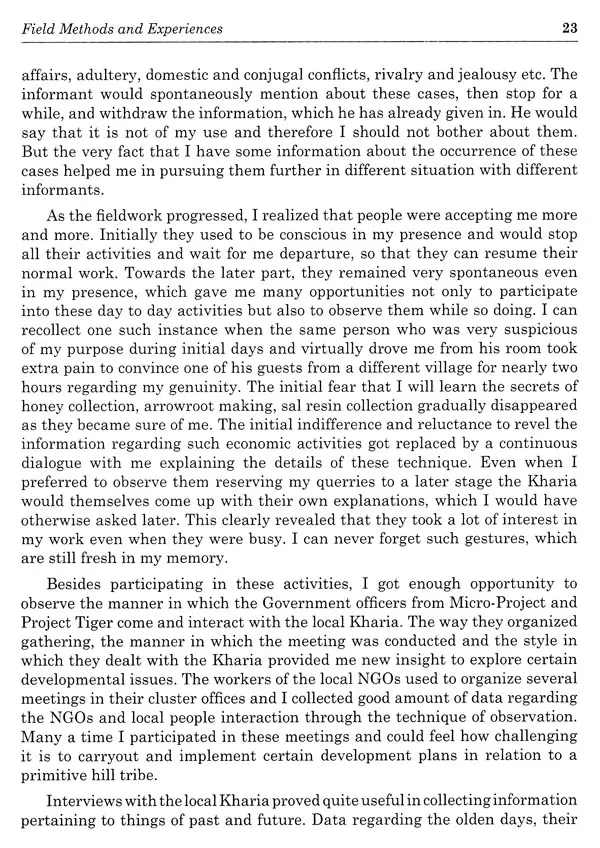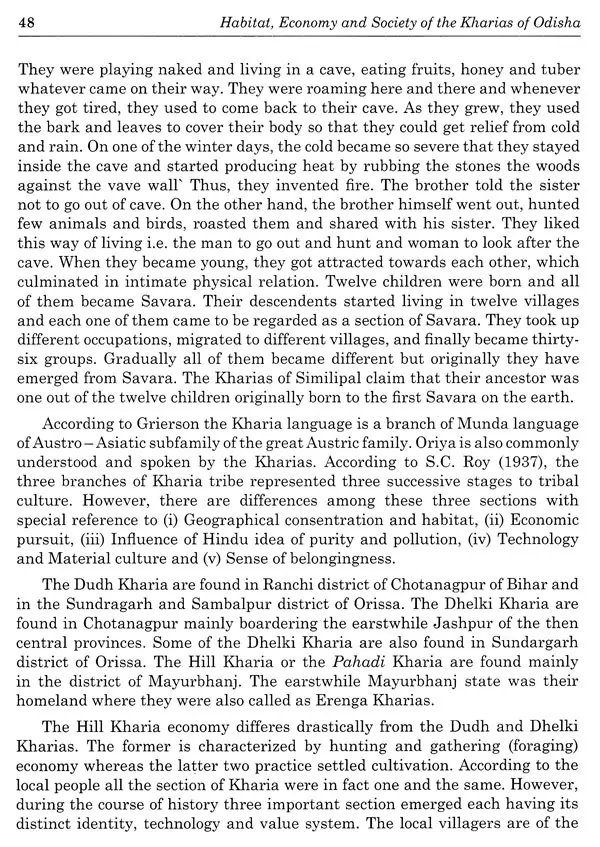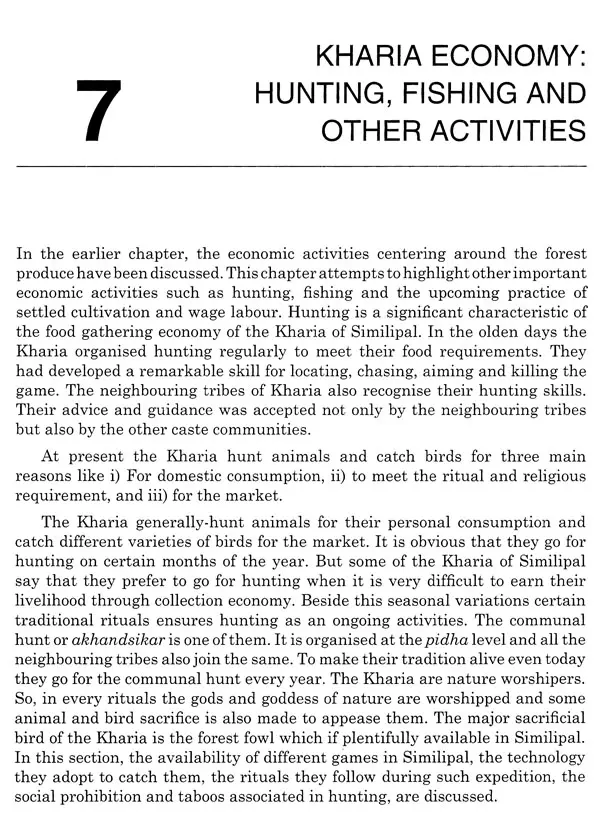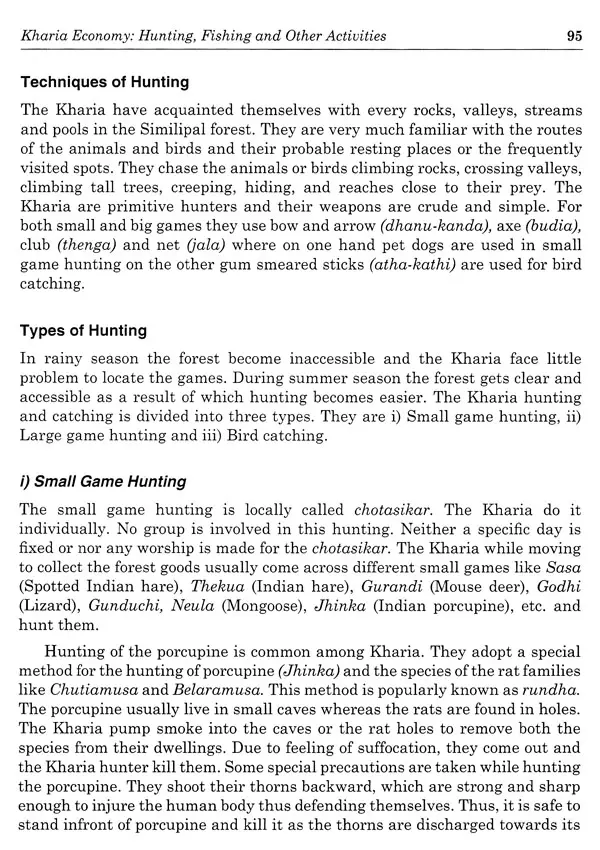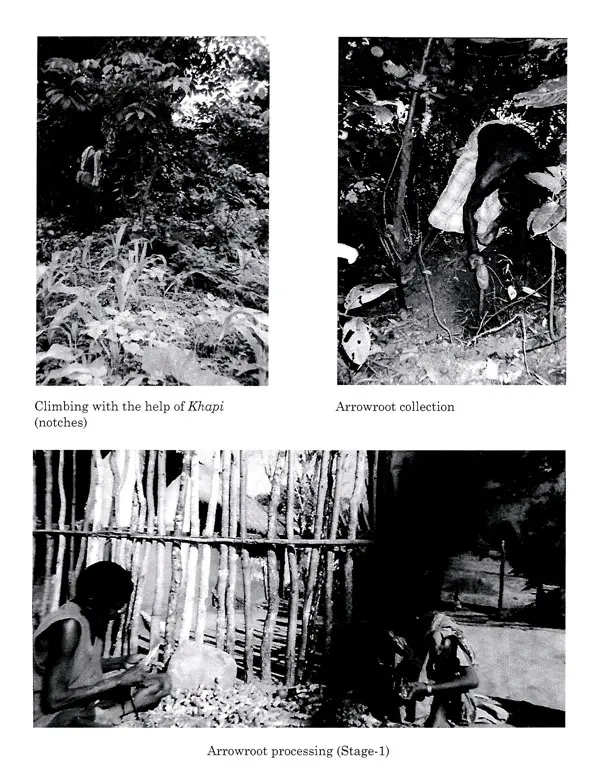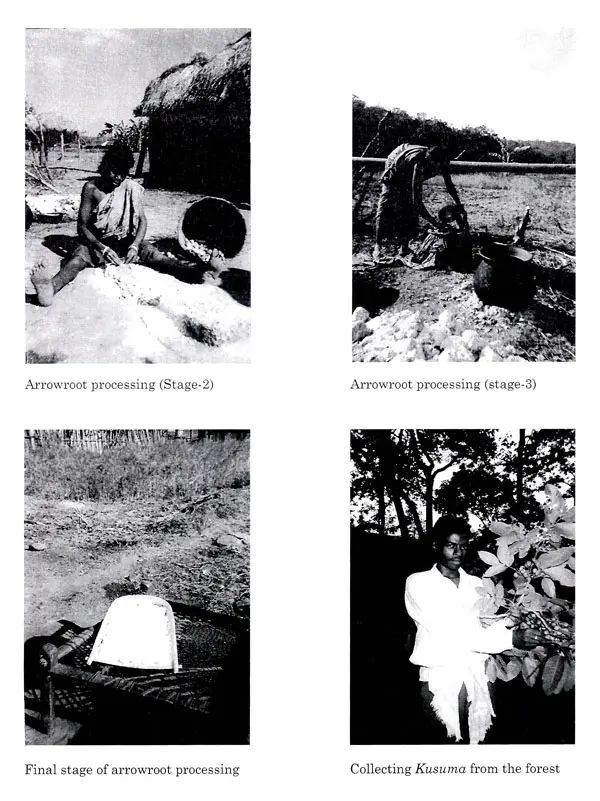
Habitat, Economy and Society of the Kharias of Odisha
Book Specification
| Item Code: | UAP763 |
| Author: | Surendra Kumar Jena |
| Publisher: | Aayu Publications, New Delhi |
| Language: | English |
| Edition: | 2022 |
| ISBN: | 9789391685010 |
| Pages: | 183 (Throughout B/w Illustrations) |
| Cover: | HARDCOVER |
| Other Details | 10.00 X 7.50 inch |
| Weight | 550 gm |
Book Description
Among the "contemporary primitives, the Kharias has been occupied an important position in the anthropological literature. The present study Habitat, Economy and Society of the Kharias of Odisha is an attempt to understand the relationship between Kharia social organization and their habitat. The fieldwork for the present study was carried out in different phases in 1995-1999 in Similipal of Mayurbhanj district of the than Orissa now Odisha. Understanding of such a relationship requires analysis of the productive forces, material culture, and technology and value system associated with the exploration of natural resources. It is the economic relations, which provide the needed linkage between society and environment. Thus, the focus of the study centres around three important interrelated dimensions ie. habitat, economy and society. For this, a detail understanding of the physical environment of the Kharia: would act as the point of departure. The environment-society relationship can best be understood by locating it in its historic specific context. The study attempts to explore the manner in which the Interaction between society and environment is articulated through material culture, technology, religious ideas and cultural values. In addition to this, the study aims to elucidate the important structural principles of Kharia society with special reference to the dynamic between various parts of social organization. The study also not only describe how the Kharia are related to the environment through the institution of economy, technology and material culture but also to find out how such a relationship is changing overtime due to several factors. Attempt has been made not to repeat the ethnographic or monographic work, which has already been done on Kharia, but to present a contemporary ethnography it against the backdrop of economy and ecology. It is also highlighting the various socio economic transformations that the Kharia have undergone over a period of time and the factors. responsible for transformation.
Dr. Surendra Kumar Jena- A Doctorate (Ph D) in Social Anthropology from Delhi University and Social Development/Program Management professional, having over 20+ years of extensive experiences in Program Management, Coordination, Training. Research, Networking and Advocacy and Information Dissemination. His work experiences includes managing and coordinating varied projects like Maternal and Child Health, Nutrition, Decentralized Planning and Local Self Governance. Livelihood, Social Accountability. Disaster responses providing services to the marginalized communities, management and rendering technical support to the Government etc. in the geographical locale of Bihar, Chhattisgarh Madhya Pradesh, Odisha, Uttar Pradesh and North Eastern States of India. He has worked with the civil society Organizations like SAMRTHAN- Centre for Development Support. Mott MacDonald, Centre for Youth and Social Development (CYSD), Chhattisgarh Irrigation Development Project (CIDP)- Asian Development Bank (ADB), CARE- India. At present, he is the Team Leader for MAMTA-Health Institute for Mother and Child, Bhubneswar, Odisha..
Among the "contemporary primitives", the Kharias has been occupied an important position in the anthropological literature. The present study in as attempt to understand the relationship between Kharia social organization and their habitat. Understanding of such a relationship requires analysis of the productive forces, material culture, and technology and value system associated with the exploration of natural resources. It is the economic relations, which provide the needed linkage between society and environment. Thus, the focus of the study centres around three important interrelated dimensions i.e. habitat, economy and society. For this, a detail understanding of the physical environment of the Kharia would act as the point of departure. The environment society relationship can best be understood by locating it in its historic specific context. The study attempts to explore the manner in which the interaction between society and environment is articulated through material culture, technology, religious ideas and cultural values. In addition to this, the study aims to elucidate the important structural principles of Kharia society with special reference to the dynamic interrelationship between various parts of social organization.
The study is not only describe how the Kharia are related to the environment through the institution of economy, technology and material culture but also to find out how such a relationship is changing overtime due to several factors. Attempt has been made not to repeat the ethnographic or monographic work, which has already been done on Kharia, but to present a contemporary ethnography contextualizing it against the backdrop of economy and ecology.
It is also highlighting the various socio-economic transformations that the Kharia have undergone over a period of time and the factors responsible for transformation. The fieldwork for the present study was carried out in different phases in 1995-1999 in Similipal of Mayurbhanj district of the than Orissa now Odisha. For accomplishing this task, I have been greatly supported by many.
Book's Contents and Sample Pages
